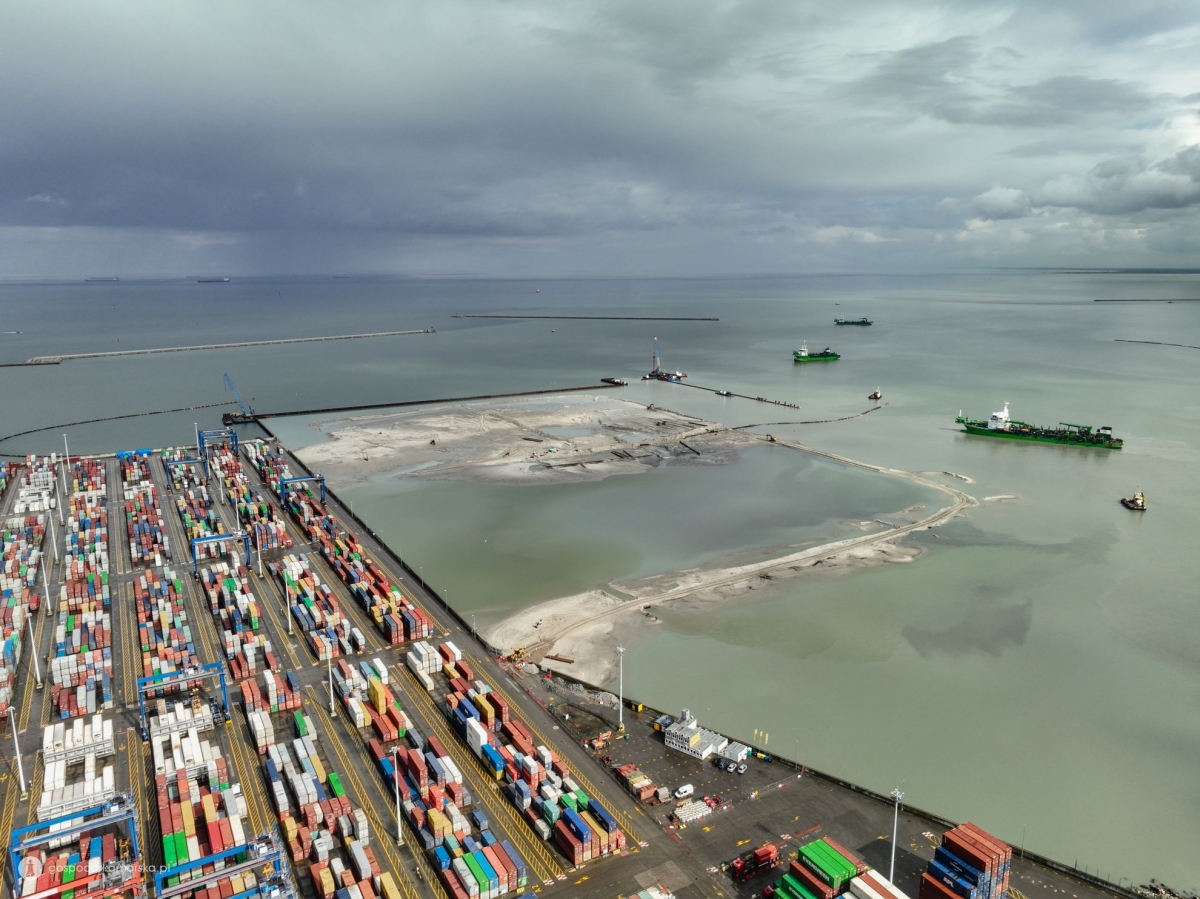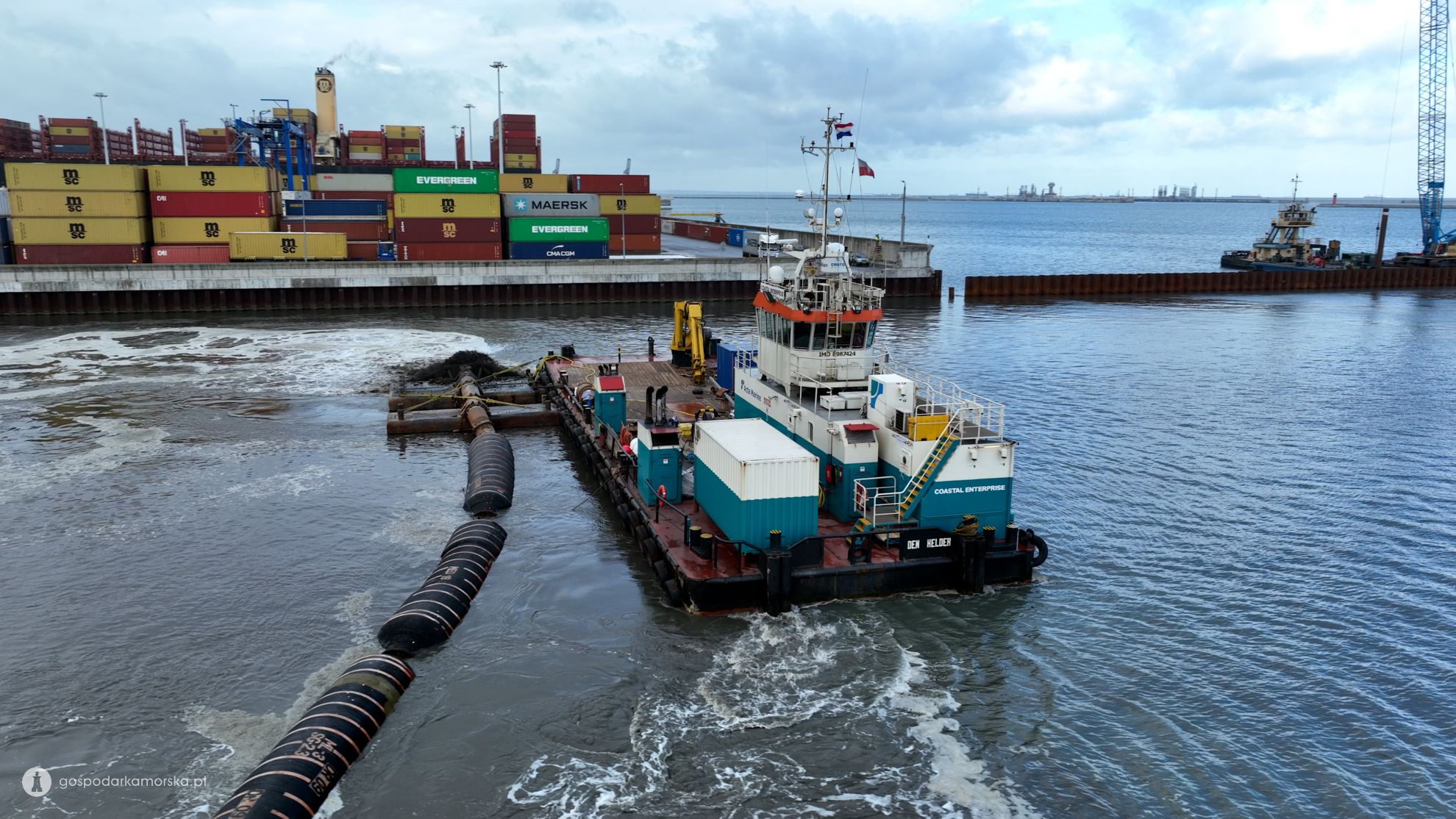
The works, which are to result in the
construction of the new T3 terminal in the Baltic Hub, officially
started in autumn and have not stopped even for a moment since then.
We checked the progress on the construction site.
The Baltic
Hub container terminal, until recently known as DCT Gdańsk, is
expanding. Although it is already the largest terminal of this type
in the Baltic Sea, after the completion of a huge investment
involving the construction of a completely new quay, the Baltic Hub
will significantly increase its handling capacity. As part of the
investment, a new deep-water quay will be built to handle ocean-going
container ships. There will also be a maneuvering and storage yard
with an operating area of 36.5 ha.
The entire works, for which the consortium of Budimex and DEME companies is responsible, has been divided into stages. The first one started last fall.
– Construction works started on
October 20 last year. Currently, intensive works are underway in the
port basin of the future T3 terminal. The pool is being deepened and
refilled. Currently, the progress of silting works reaches approx.
20%. At the same time, the piling works are in progress. We have
finished driving the sheet piling in the northern closing quay –
lists Dominik Wróblewski, Director of Infrastructure Projects,
responsible at the Baltic Hub for, among others, for the T3
investment. – In the near future we plan to start piling the quay
of the main T3 terminal. These will be tubular piles 35 to 40 meters
long. We will continue to drive the wall and refulfill. Around March,
we plan to start reinforced concrete works – adds Wróblewski.
Dominik Wróblewski also informs
that 4.6 million cubic meters of material will have to be dredged to
build the entire 36 ha platform, while the deepening of the approach
basin itself will require 5.6 million cubic meters of material to be
dredged from the bottom.
Dredging works in the area of the
future port basin are carried out with the use of suction-regulating
dredgers. Each of them can fit in the hold over 5,000 cubic meters of
excavated material from the bottom. This material will be used in the
next stages to build the platform that will become the T3 terminal.
– When it comes to the materials
needed to build the terminal, we need 11,000 tons of structural
steel, 8 thousand tons of reinforcing steel. We will build in 170,000
tons m3 of concrete – lists the director of infrastructural
projects.

The main quay of the T3 terminal
under construction will have a total length of 717 meters. 7 port
cranes will work on it, and 20 automated RMG cranes will operate on
the maneuvering and storage yard.
– This is a huge investment for
us, which will consume around EUR 500 million. From now until summer
2024, we will have a lot of hard work to put the T3 terminal into
operation – said Charles Baker, general director of the Baltic Hub,
during the official commencement of works. – The biggest change
will be the introduction of rail cranes in the square instead of RTG.
These are semi-automatic cranes, which means that the operators will
not be in the machine itself, but will control it remotely from our
administration building – described Baker.
The first stage of the T3 terminal
is to be commissioned in 2025.


